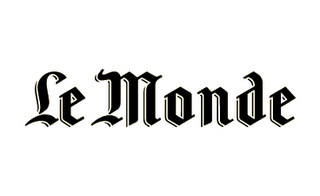“Les Belges, Les Belges sont les objets de toutes nos blagues!” (Belgians are the butt of all our jokes) she repeated, and pointed to Chiana from Spain.
“Les Catalans,” Chiana said sheepishly, but her answer opened the door for the rest of us. “Canadians!” was the energetic response from two University of California students (a Davis and an Irvine), while Yvonne from Singapore apparently makes fun of Malaysians. The British laugh at Scotland, Chileans scorn Peruvians, and people from the Netherlands get no respect from Germany. It sounds like everyone everywhere has the neighbors they like and the neighbors they like to feel superior to.
Each week we have 14 hours of French class (in effect an entire UW quarter crammed into 4 weeks) and 4 hours of “Travaux Pratiques.” My actual French language classes are more of a redundant review of grammar rules, but I really am learning new things every day. For Travaux Pratiques, we spend two hours twice a week listening to Prof. Germanangue lecture about anything he thinks we need to understand about France. He’s the one who works for Ségolène Royal, and as a Sciences Po alum, his are the most interesting four hours of my week.
Today the whole class was nearly absent for registration – luckily we’re apparently all at least semi-intelligent (though maybe not compared to our French counterparts at Sciences Po), because everyone but sick Rachael was in class on time today. Last night at 22h an announcement was added to the registration page moving our scheduled day back to Thursday. It’s a good thing I checked online this morning, because we spent all of M. Germanangue’s class discussing the French press. Needless to say, I was pretty into it.
In France (and most countries) there is the presse régionale and the presse nationale. The national papers are mostly based out of Paris (it’s the largest city and center of the government – it makes sense), and of these, there are five that are the most significant. Ranging in slant from the far left to the far right, these newspapers also happen to range in physical size – the largest paper being the most conservative and the smallest the most liberal (in the U.S. sense of the word*).
While American liberals would be closer to moderates on the French political scale, the farthest left-leaning paper is L'Humanité. Founded in 1904 by the Communist Party of France, the journal (newspaper, if you didn’t already guess) was considered the organe officiel (official mouthpiece) of the CP in France.

After L’Humanité is Libération, journal of the French “BoBo.” This is the term given to the bourgeois-bohème, sometimes known as la gauche caviar. Fairly self-explanatory, these terms are probably closest in meaning to the “limousine liberals” of the U.S. – basically people of comfortable socio-economic standing who sympathize with figures like Che Guevara. Libération apparently sells a lot of copies in the 10ème and 11ème arondissements – the funky middle-class areas.

Right in the middle of the nationales falls Le Monde. This is probably the most generally respected paper in France (though as M. Germanangue said, it depends on your personal politics). Le Monde staff consider themselves the French equivalent of the New York Times, and even M. Germanangue couldn’t assign a definite political sway to this paper. When a student asked where in Paris Le Monde is read, the answer was “Ici.” Right here at Sciences Po. Le Monde is the newspaper of professors and intellectuals, and is the safest bet for objective news writing.

Fourth is La Croix. As can be determined from the title (The Cross), La Croix is a French-Catholic news outlet. This paper’s slant is usually neither specifically politically left or right, but is obviously socially conservative. During the Dreyfus Affair (the temporary exhibit at the museum of Jewish Art and History right now), however, it took a decidedly anti-Dreyfus and anti-Semitic stance.

The largest (in size and circulation) conservative paper in France is Le Figaro. According to M. Germanangue, Le Figaro is read in clubhouses and in wealthy homes of the 16ème arrondissement. It’s funny to me that these papers can be completely shamelessly slanted – but it’s okay because they don’t pretend to be objective. Every French person chooses who to take their news from – with no apologies. Of Monday’s front pages, the centerpiece article in La Croix and Le Figaro featured the pope’s semi-apology. Libération, on the other hand, printed a full-page photo illustration of Ségolène Royal.

Most of the class was rapt for the entire two hours – we were also tickled to walk into our next class and have Prof. Rouzin ask if anyone had seen the article on Ségolène Royal in Libération yesterday. Thanks to our new comprehensive understanding of the journaux quotidiens of France, we were able to quickly deduce her (leftist) political leanings. I don’t know if I can remember the last time I was this interested in school – it’s kind of exciting.
* It’s important to distinguish that in France, “libéral” refers more to liberal economics, or those who support the free market/capitalism. These people are typically more conservative in the U.S.
** I just got an email from Sciences Po saying they understand that the courseload is extremely dense and students barely have time to complete their work, much less relax during fall semester. In light of this, the email detailed the dates of a bunch of extra vacation days for our “travaux personnels,” or days to get things done. Now we get a random week off of classes in the middle of November, and a few extra days in mid-December. Hooray!
















4 comments:
We started laying off the canadians and started with the dutch this year
We did?
kind of
Bonne journée de la part de Maurice
Post a Comment